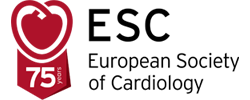Seppo Lehto MD, PhD, FESC, Cardiologist
Adjunct Professor, University of Eastern Finland, Chief of Health Services Varkaus Hospital, Unit of Kuopio University Hospital, Finland
National CVD Prevention Coordinator for Finland
This report was prepared by:
- Seppo Lehto, MD, PhD, FESC, Cardiologist, Adjunct Professor, University of Eastern Finland, Chief of Health Services Varkaus Hospital, Unit of Kuopio University Hospital, Finland, National CVD Prevention Coordinator for Finland
- Veikko Salomaa, M.D., PhD, Research Professor, emeritus THL-National Institute for Health and Welfare, Finland
- Antero Kesäniemi, M.D., Professor of Medicine, emeritus University of Oulu, Senior Adviser Oulu University Hospital, Finland
- Anna-Mari Hekkala, M.D., PhD., Cardiologist, Medical Director of the Finnish Heart Association
Documents to download
Health care structure
Finland’s health care system is complex and decentralised. Primary care offers multiple services in health centres and occupational units. Secondary care is provided by hospitals organised by municipality-owned hospital districts, and tertiary care is delivered in five university hospitals. There were 51 cardiologists per million inhabitants in Finland in 2017.
Costs for health care are 9.4% of Finland’s gross domestic product (GDP), which is slightly below the average in EU. All permanent residents are entitled to health insurance coverage. A wide range of health services are publicly covered.
Risk factors
There has been a remarkable reduction in coronary heart disease incidence and mortality over the past 40 years in Finland. The starting point was the famous North Karelia Project, which aimed at reducing the levels of smoking, blood cholesterol and blood pressure.
The prevalence of major CVD risk factors in Finland 2017:
| Risk factor | Men | Women |
| Smokers (regular smoking) | 15.6% | 10.7% |
| Sedentary lifestyle | 27.5% | 29.3% |
| Obesity (BMI > 30kg/m2) | 26% |
28% |
| Diabetes mellitus | 14.6% | 9.4% |
| Hypertension (>140/90 mmHg) | 57.6% | 48.3% |
| Hypercholesterolemia (total cholesterol > 5 mmol/l) | 53.8% | 60.2% |
| Salt intake g/day | 8.9 | 6.5 |
Main actors
- The Finnish government through the Ministry of Social Affairs and Health
- The health authorities in each municipality, and the hospital districts that they constitute
- The Finnish National Institute for Health and Welfare, a Finnish expert agency that provides information on health and welfare
- The Finnish Medical Society Duodecim. Education, publications and research grants
- The Finnish Cardiac Society, and its working group on cardiac prevention and rehabilitation
- The Finnish Heart Association, the oldest heart association in Europe, and the largest patient organisation in Finland with 70 000 members.
Prevention activities
Finland has joined the WHO’s Global Strategy on Diet, Physical Activity and Health. In 2017, the Finnish “Focus on Prevention” declaration summarises major objectives.
- Obesity: The National Obesity Programme 2012-2018 aims at achieving a downward trend in the obesity.
- Nutrition: The National Nutrition Council of Finland renews recommendations on nutrition every eight years and takes initiatives and provides statements. The Nutrition Commitment model encourages food business operators to improve the nutritional quality. The Heart Symbol, a front-of-page logo, helps people to pick up healthier food.
- Tobacco: Smoking is already prohibited in public areas, transport and restaurants. Condominiums have the right to restrict smoking on balconies. Smoking is also totally prohibited at many workplaces. In 2020, flavours which might hide the taste of tobacco (such as menthol) will be prohibited. A drug for weaning from the addiction to tobacco is reimbursable. Finland is on its way to eradicate smoking. The official goal is set for a smoke-free Finland by 2030.
- Alcohol: The Alcohol Act was reformed in December 2017 in an unfavourable way. Education about the harmful effects of alcohol is needed.
- Physical activity: “On the move – national strategy for physical activity promoting health and wellbeing” report by the Ministry of Social Affairs and Health, National Guidelines on Physical Activity etc. declarations to promote more active lifestyle.
Cardiac Rehabilitation
There are several ways to accomplish cardiac rehabilitation in Finland. Some of them are focused on physical rehabilitation; other programs consist of education as well.
Cardiac rehabilitation should be recommended for every patient. Unfortunately, one of the problems in Finnish health care system is the lack of coordination between secondary and primary care; and patients are not guided systematically to cardiac rehabilitation. There are opportunities for rehabilitation, but they are not utilised as desired.
Aims for the future
Many behavioural risk factors are much more prevalent among disadvantaged groups, and social inequality is a major problem. Actions are needed to diminish this social inequality in health.
The Finnish health care system is going to be reformed within next years. The aims are to improve the equity, access and effectiveness of health and social care services while ensuring efficiency gains and containing costs. An important challenge is to promote greater care coordination between primary care and hospitals.
Note: The content of this article reflects the personal opinion of the author/s and is not necessarily the official position of the European Society of Cardiology.

 Our mission: To reduce the burden of cardiovascular disease.
Our mission: To reduce the burden of cardiovascular disease.